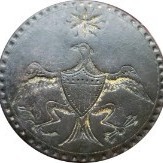A Month In Western Usa, 5 Of 5 Reports Posted -- Complete (updated)
-
Similar Content
-
- 12 replies
- 729 views
-
- 19 replies
- 1,060 views
-
- 10 replies
- 790 views
-
- 17 replies
- 2,085 views
-
New Permission Made Me Go To An Old One (update 2) 1 2
By F350Platinum,
- relic detecting
- relic found
- (and 1 more)
- 17 replies
- 8,800 views
-
- 13 replies
- 2,279 views
-
-











Recommended Posts
Create an account or sign in to comment
You need to be a member in order to leave a comment
Create an account
Sign up for a new account in our community. It's easy!
Register a new accountSign in
Already have an account? Sign in here.
Sign In Now